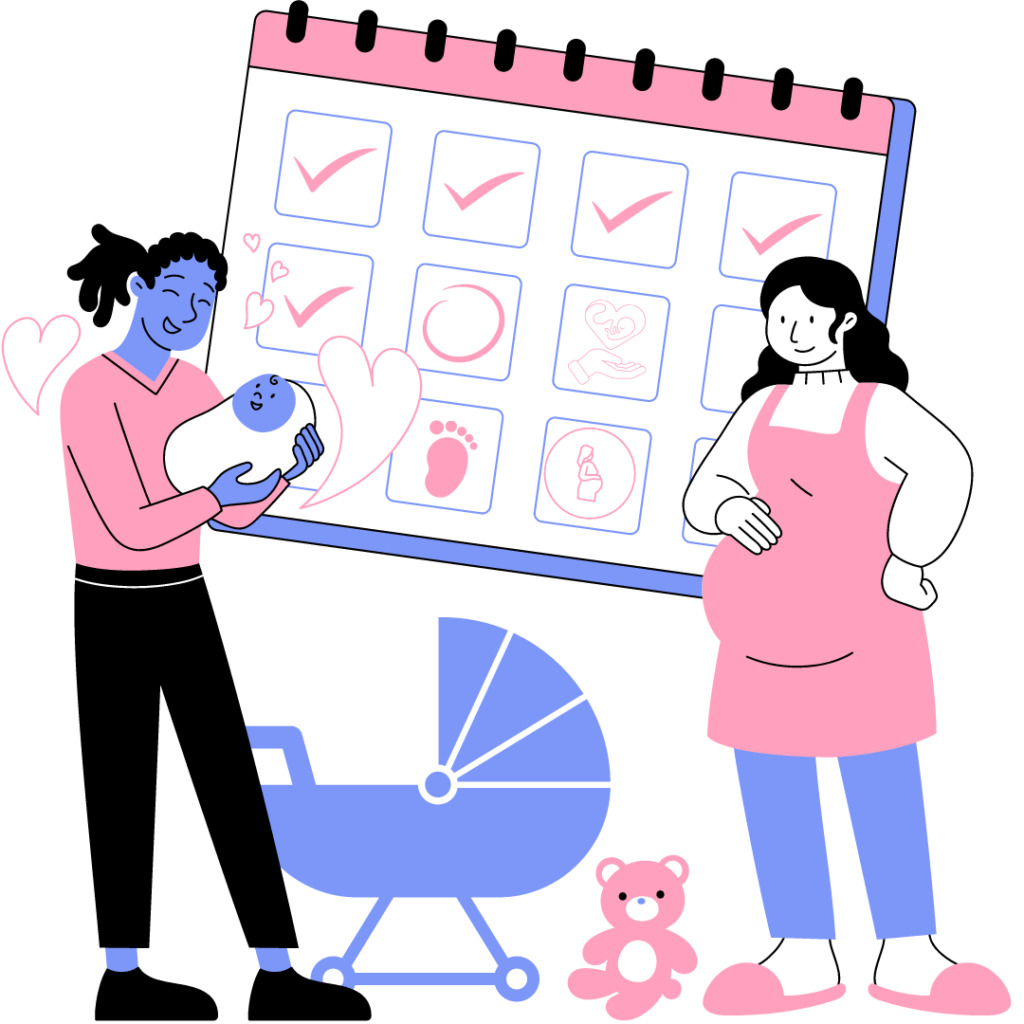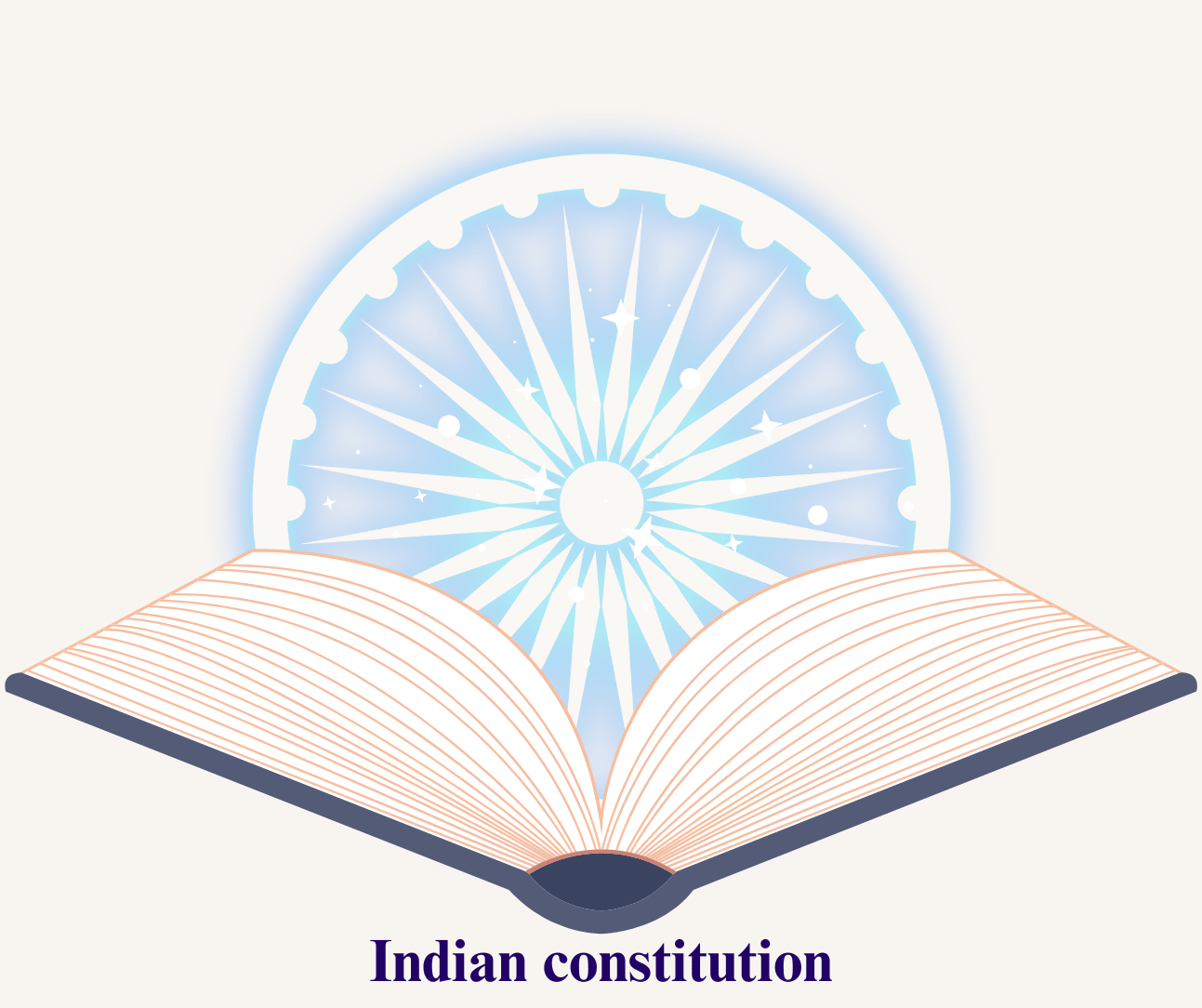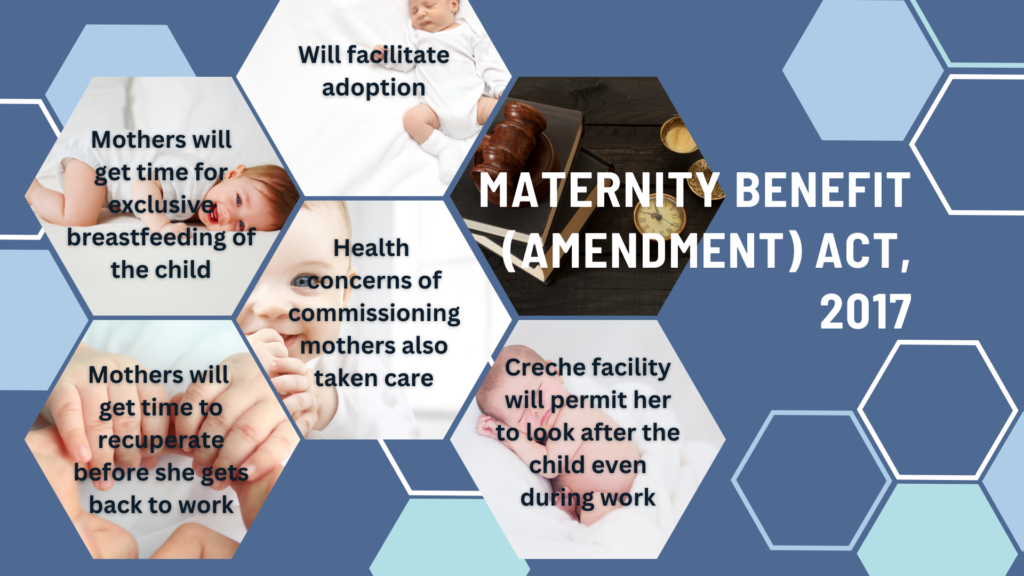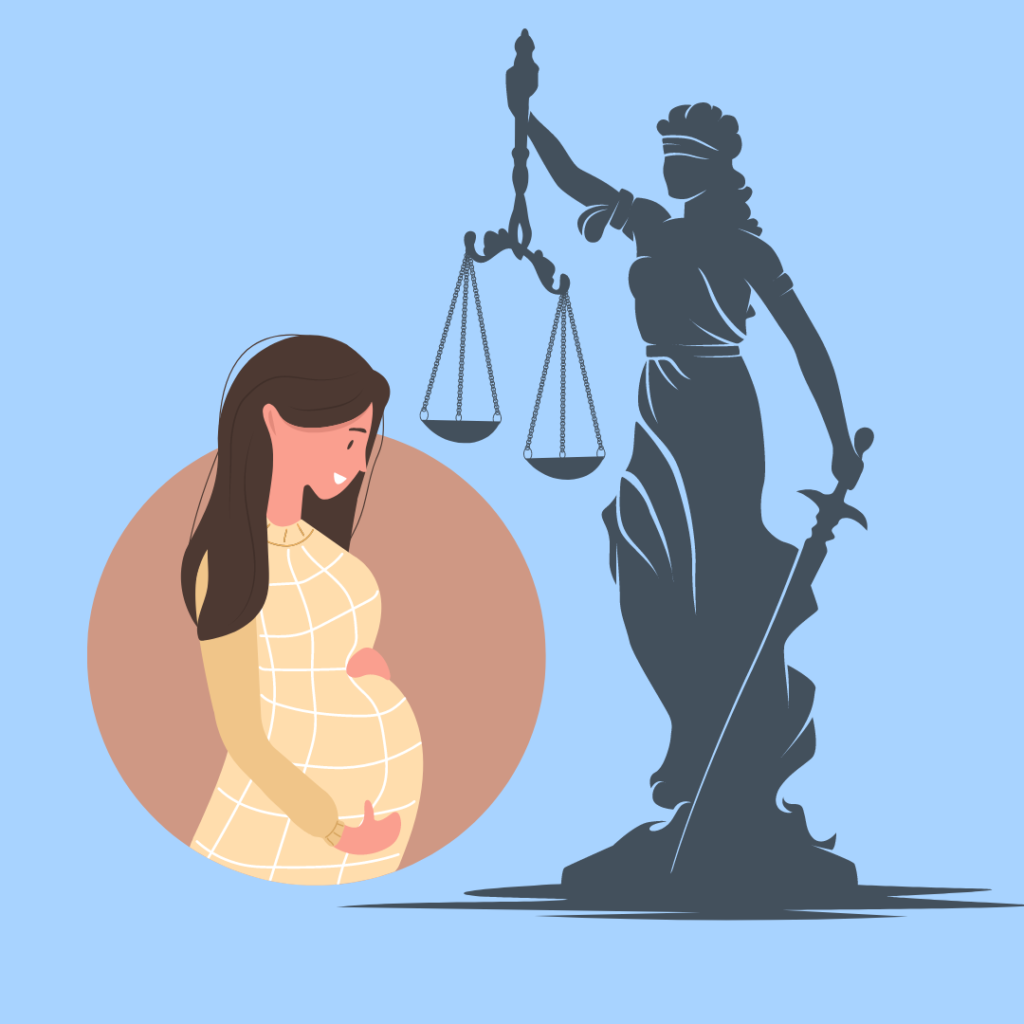Introduction to Maternity Benefit Act:
The Maternity Benefit Act is a significant legislation in India designed to provide maternity benefits and ensure the health and well-being of women employees during pregnancy and childbirth.
Maternity rights also extend to other areas such as access to prenatal care, workplace accommodations, breastfeeding support, and protection against discrimination. These rights vary across different countries and jurisdictions, but are designed to ensure the overall well-being of pregnant individuals in the workplace and beyond.

Maternity meaning according to Maternity Benefit Act:

The definition of “maternity” in India with regard to the benefits and protections afforded to new and expectant mothers in the workplace is provided by the Maternity Benefit Act of 1961. As per this legislation, “maternity” encompasses the duration of pregnancy and encompasses the six-week period following childbirth.
Maternity leave is a crucial aspect of employment and legal rights, providing pregnant women with the opportunity to take time off work before and after giving birth. This period of time off, which may include benefits like paid leave, job security, and the ability to return to work after the maternity leave period, is crucial for the mother’s and the child’s health and wellbeing.

Key objectives of the maternity Act
- Objective: The main aim of the Maternity Benefit Act is to govern the employment of women workers in specific establishments and offer maternity benefits like paid leave and medical benefits during pregnancy and childbirth.
- Applicability: This Act is applicable to all factories, mines, plantations, and other establishments specified by the government, which employ ten or more individuals, and to every woman worker in such establishments.
- Women employees are eligible to receive medical benefits for pregnancy, childbirth, and postnatal care as per the Act. Employers must offer free medical services, such as prenatal and postnatal treatment, to female employees.
- Establishments with 50 or more employees are required by Indian labour law to provide creche facilities for children under six years old, either separately or as part of common facilities.
- The Act establishes Inspectors to ensure labour laws compliance with its provisions and enforce them among employers. These Inspectors have the authority to enter and inspect any premises covered by the Act, as well as review records related to maternity benefits and services for female employees.
- Employers who fail to comply with the maternity benefit act may face penalties, including fines and imprisonment.
Provisions in Maternity Benefit Act 1961
The Maternity Benefit Act 1961 is designed to protect the rights of women employees during pregnancy and childbirth. Below are the main provisions of the Act:
These provisions of the Maternity Benefit Act, 1961, are designed to safeguard the health, well-being, and rights of female employees during pregnancy and childbirth. They also aim to promote gender equality and provide the necessary support and protection in the workplace.

Maternity Benefits leave rules in India
- The Act grants maternity leave of up to 26 weeks for women employees, with full wages, before and after childbirth.
- It also permits a discretionary extension of maternity leave up to 12 weeks in case of medical complications related to pregnancy, delivery, premature birth, or miscarriage.
- Employers must provide maternity benefits for the entire duration of the maternity leave period as outlined by the Act.
- Notice of Pregnancy: Women employees must inform their employers about their pregnancy, expected delivery date, and the duration of maternity leave they plan to take.
- Prohibition of Dismissal: Employers are not allowed to dismiss or discharge women employees during their paternity leave.
- Altering the terms of employment to the detriment of the woman employee during her maternity leave in India is also prohibited.
Maternity Benefit Compliance and Inspections:
Under the Maternity Benefit Act, 1961, the government has established inspections and labour law compliance mechanisms to ensure that employers adhere to the provisions of the Act and provide mandated maternity benefits and facilities to women employees. Here is an overview of how inspections and compliance are managed under the Act:
By implementing these inspections and compliance mechanisms, the maternity benefit act aims to ensure that women employees receive their entitled benefits and facilities during the maternity period.
The Maternity Benefit Act 2017 Amendment:
The 2017 amendment to the Maternity Benefit Act of 1961 is a significant legal update in India aimed at regulating the employment of women in designated establishments during pre and postnatal periods, as well as providing maternity benefits. Below are the main provisions and modifications introduced by this Act is the latest maternity benefit act.

Key Provisions of the Maternity Benefit Act Amendment, 2017:
Benefits of the Amendment:
Support for Diverse Motherhood
The inclusion of maternity benefits for adoptive and commissioning mothers acknowledges and supports different forms of motherhood.
Increased Female Workforce Participation
offering work-from-home options and establishing crèche facilities, the Act aims to encourage more women to actively participate in the workforce.
Enhanced Health and Well-being
The extended maternity leave provision promotes better postnatal care for both mothers and infants, leading to improved health and overall well-being.
Compliance Requirements for Employers:
Challenges and Factors to Consider:
Financial Implications
Employers may face increased operational costs when offering extended leave and establishing crèche facilities.
Awareness & Execution
It is essential to ensure that both employers and employees are knowledgeable about the rights and provisions outlined in the amended maternity act to ensure successful implementation.
Operational Adaptations
Managing extended periods of leave and work-from-home arrangements may necessitate adjustments in workforce planning and project management.

Maternity Leave for Government Employees
Maternity leave for government employees in India is regulated by the respective state or central government. The duration of leave and other related benefits can vary depending on the specific rules applicable to the government department or organization.
Here are the key points regarding maternity leave for central government employees:
Maternity leave provisions generally apply to all female employees, regardless of their marital status, and are available for up to two surviving children.
The central government has introduced provisions for paternity leave, allowing male employees to take leave for a specified duration before or after the birth of their child.
In certain circumstances such as illness arising from pregnancy, delivery, premature birth, or miscarriage, women employees may be entitled to additional leave on top of the 26 weeks of maternity leave.
Employees are entitled to receive their regular salary, including any allowances or benefits, during their maternity leave.
The Maternity Benefit (Amendment) Act, 2017 extended the paid maternity leave to 26 weeks for women working in the organized sector. This also applies to central government employees.
It’s important to note that the rules and provisions regarding maternity leave rules may differ between central government employees and state government employees. Additionally, different government departments or organizations may have their own policies and guidelines regarding maternity leave.
For the most accurate and up-to-date information, it is recommended to refer to the official notification regarding maternity leave for government employees.
Maternity Benefit Act FAQs:-
Does the Maternity Benefit Act apply to all companies?
Answer: The Act applies to establishments with 10 or more employees, including factories, shops, and organizations. This ensures that women in both large and small workplaces receive maternity support and benefits.
What are nursing breaks under the Maternity Benefit Act?
Answer: The Act mandates that new mothers be given nursing breaks to breastfeed or care for their newborns during working hours. These breaks are in addition to regular breaks and ensure time for child care without wage deductions.
What are the penalties for employers not complying with the Maternity Benefit Act?
Answer: Non-compliance with the Act can result in penalties, including fines and potential imprisonment for employers. The law enforces strict penalties to ensure that women’s rights to maternity benefits are protected.
Is the employer obligated to pay during maternity leave?
Answer: Yes, under the Maternity Benefit Act, employers must provide full pay during maternity leave to eligible employees. This ensures that women receive financial support during their absence due to childbirth.
Can maternity leave be extended beyond 26 weeks?
Answer: The Act does not mandate extensions beyond 26 weeks, but employers may offer extended unpaid leave or flexible arrangements at their discretion. Maternity leave extensions depend on company policies and individual negotiations.
Are adoptive and commissioning mothers eligible for maternity benefits?
Answer: Yes, the Maternity Benefit Act includes provisions for adoptive mothers and commissioning mothers. Adoptive mothers of children under three months old are entitled to 12 weeks of maternity leave, supporting the child’s initial care needs.
What are the benefits provided under the Maternity Benefit Act?
Answer: The Act provides paid leave, medical bonus, nursing breaks, and job protection. Employers must ensure that eligible women receive full pay for the leave period and the right to return to their position post-leave.
How much maternity leave is allowed under the Maternity Benefit Act?
Answer: The Maternity Benefit Act provides eligible women with 26 weeks of paid maternity leave for their first two children. For subsequent children, the leave entitlement is 12 weeks. This duration allows women time for childbirth and postnatal recovery.
Who is eligible for maternity leave under the Maternity Benefit Act?
Answer: Under the Act, women employees who have worked for at least 80 days in the 12 months before their expected delivery date are eligible for maternity leave and benefits. This eligibility criterion helps ensure that employees receive support during pregnancy.
What is the Maternity Benefit Act, 1961?
Answer: The Maternity Benefit Act, 1961 is an Indian labor law that provides maternity leave and benefits to women employees, ensuring their right to paid leave during and after pregnancy. The Act promotes workplace support for women’s health and well-being.
Summery of Maternity Benefit Act:
The Maternity Benefit Amendment Act 2017, represents a significant step towards enhancing maternity benefits for women employees in India. By extending maternity leave, introducing work-from-home options, and mandating crèche facilities, the Act aims to support the health and well-being of mothers and children while promoting gender diversity and inclusion in the workforce. Employers must take proactive steps to comply with these provisions and support their employees in balancing work and family responsibilities.
To summarize, the Maternity Benefit Act aims to safeguard the rights of female workers throughout their pregnancy and childbirth, prioritize their overall health and welfare, and eliminate any form of discrimination in the workplace related to maternity
Contact Us for Labour Law Compliance
Stay compliant with Labour Laws effortlessly. Explore comprehensive guides, key compliance requirements, and expert insights on employment regulations. Avoid penalties and ensure workplace safety with our up-to-date resources on labour law compliance.

